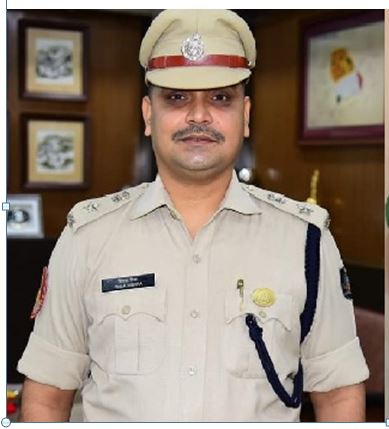Mrinal Chatterjee
Guru Dutt, one of the greatest filmmakers that India has produced was born on 9 July 1925 and died on 10 October 1964.

He made less than ten films in his short life of just 39 years. His life saw dramatic ups and downs. He reached dizzy heights of material success and plunged into an emotional abyss, which drove him to heavy drinking that led to his premature death.
His 1957 magnum opus Pyaasa (which was a run-away hit in the box office) was listed in Time magazine’s all-time 100 movies, while films like Sahib Bibi Aur Ghulam, Chaudvin Ka Chand, Aar Paar and Kaagaz Ke Phool (the first Cinemascope Indian film, It marked a technical revolution in Indian cinematography. However, it miserably flopped at the box office), have all become cult classics in their own right. Considered to be a man ahead of his time, he made films in different genres that set trends.
Starting his career as a dancer, Guru Dutt (his real name was Vasanth Kumar Shivashankar Padukone) carved out a niche in Indian cinema in a very short span of time. He made his directorial debut with Gamble (1951), which starred Dev Anand. It did reasonably well at the box office. However, he tasted success with Aar Paar (1954), another crime thriller.
Pyaasa (1957) is regarded as his best work. About a poet trying to achieve success in a hypocritical, uncaring world, it was a box-office hit and is ranked as his greatest film ever.
Two years later he made Kaagaz Ke Phool (1959), the semi-autobiographical story of a tragic love affair set against the backdrop of the film industry. It was the first Cinemascope Indian film, It marked a technical revolution in Indian cinematography. It miserably flopped at the box office, which wrecked him from inside. He never directed a film after that. Though he produced and acted in some more films including the much acclaimed Saheb Bibi aur Gulam, but his personal life had become complicated. He had gotten romantically involved with Waheeeda Rehman and his wife Geeta Dutt had separated from him as a result. He took to heavy drinking, which led to his premature death- a poignant reminder of the fragility of genius.
His films remain a testament to his extraordinary talent and continue to inspire filmmakers and cinephiles alike. His contributions to Indian cinema have paved the way for future generations, leaving an indelible imprint on the art of storytelling.
Bahuda Yatra
As I wrote in this column last week, there are rath yatras (chariot journey) in many places across the world. Different deities of different religions are taken on a chariot in a procession. In India the rath yatra of Lord Jagannath in Puri is the most well-known. It involves a series of rituals spanning months , culminating in the return of the chariots to the Jagannath temple, and the deities occupying their seats.
It is called Bahuda Yatra, or Return Journey of the Chariots of Lord Jagannath, in which the chariots with deities return to the temple in a joyous procession. The festival concludes with Niladri Vijaya, where the chariots are dismantled, symbolizing the end of the divine journey and the promise of its renewal in the following year.
Wellington
For an academic like me, conferences, among many other things, give you an opportunity to visit distant land, which you otherwise probably wouldn’t have visited. It’s like as we say in Odia- rath dekhiba aau kadali bikiba (literal meaning, you see the chariot and sell bananas, one act double benefit) It was IAMCR (International Association for Media and Communication Research) conference at Christchurch, New Zealand that brought me to this land. It was my journalist-turned media academician friend Uma Shankar Pandey who suggested visiting Wellington first.
Wellington, the capital of New Zealand, sits near the North Island’s southernmost point on the Cook Strait. A compact city, it encompasses a waterfront promenade, sandy beaches, a working harbour and colourful timber houses on surrounding hills. From Lambton Quay, the iconic red Wellington Cable Car heads to the Wellington Botanic Gardens. Strong winds through the Cook Strait give it the nickname "Windy Wellington." In fact it is the world's windiest city by average wind speed.
We stayed at a nineteenth century house turned into a hotel very close to the city centre. We visited the Museum and Bay area, took a ride on the historical Cable Car and searched for Indian restaurants and eating places. We found many.
Rain Pain
Though poets from ancient times to modern- have written tens of thousands of poems on the beauty of the rain, these days rain is often associated with pain, especially in the cities- inundated roads, potholes, crumbling infrastructure. Mumbai, Delhi, Kolkata, Chennai- all the metro cities life goes haywire after a shower or two of heavy rains.
This is also happening in hilly cities like amara (our) Bhubaneswar- thanks to rampant encroachment of the nalahs, which used to drain the water and haphazardly constructed roads. This Rath Yatra, the road in front of ISCON temple looked and felt like a river.
Rain comes, there is pain in the city; rain does not come, there is pain for the farmers, as our agriculture is heavily dependent on rain.
Disclaimer:
This is the personal opinion of the author. The views expressed in this write-up have nothing to do with www.prameyanews.com.























